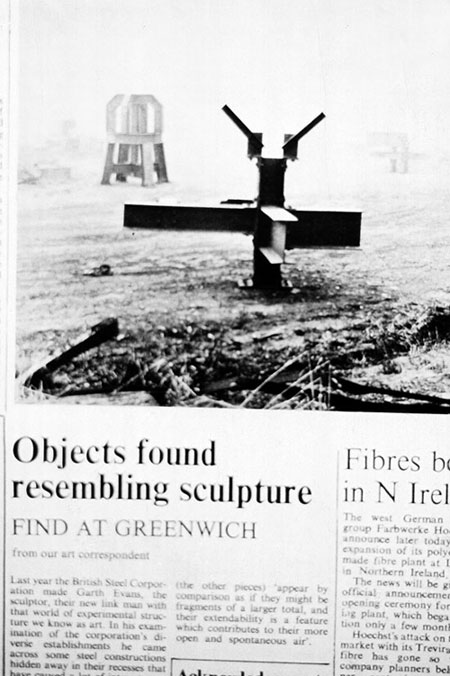Theodor W. Adorno, Aesthetic Theory, trans. Robert Hullot-Kentor (London and New York: Continuum,1997), 21.
The art historian and critic Kerstin Stakemeier makes some acute observations on this shift in my dialogue with her in “The Value of Autonomy: A conversation between Kerstin Stakemeier and Marina Vishmidt about the reproduction of art,” Texte zur Kunst 88 (December 2012): 102–117.
Karl Marx, Grundrisse: Foundations of the Critique of Political Economy (Rough Draft), trans. Martin Nicolaus (London: Penguin, 1993), 270, 334, 408–410. The footnote on p. 334 establishes the Hegelian provenance of this idea.
Of course, Schumpeter didn't believe capitalism relied on exploitation; he was at pains to disprove “Marxian doctrine” with his more scientific deductions that capital accumulation in fact relies on the “supernormal” intelligence and acuity of entrepreneurs. See “Introduction” in Joseph A. Schumpeter, Capitalism, Socialism and Democracy (London and New York: Routledge, 2003), 16. The notion of “creative destruction” is developed mainly in this text.
For a review of a recent book-length critique of the dubious term by Ben Fine, which glosses the arguments of the book as well as its limitations and the types of political agency it does not investigate, see Emma Dowling, “Tales of ‘Much of a muchness’: Adventures in the land of social capital,” ephemera: theory and politics in organization Vol. 12, No. 4: 480–485.
Anthony Davies and Simon Ford, “Culture Clubs,” Mute Vol.1, No. 18 (September 2000), see →; and “Art Futures,” Art Monthly 223 (February 1999).
Silvia Federici, lecture at launch of her book Revolution at Point Zero: Housework, Reproduction, and Feminist Struggle (Oakland: PM Press, 2012), 12 November 2012, Goldsmiths, University of London. The Guardian's ongoing coverage of the spread of payday loans and attendant controversies includes Hilary Osborne, “University of London bans payday loans on campus,” 28 February 2013; Osborne, “Problem payday loan debts rise by almost 300%,” and Nicholas Watt and Patrick Wintour, “Payday loan firms face cap after government U-turn,” 28 November 2012.
Albert-László Barabási and Eric Bonabeau, “Scale-Free Networks,” Scientific American 288 (May 2003): 60–9.
“The Parable of the Sower” in Matthew 13:12 in the New International Version: “Whoever has will be given more, and he will have an abundance. Whoever does not have, even what he has will be taken from him.”
Claire Fontaine, “Ready-Made Artist and Human Strike: A few Clarifications,” see →.
Alain Badiou, Ethics: An Essay on the Understanding of Evil (London & New York: Verso, 2002).
The “movement of the squares” in Europe and North America (15M/Indignados/Real Democracia Ya! in Spain, Syntagma in Greece, Occupy in the US) had a strong antipathy to political polarization of any kind, and declared themselves, at the highest level of generality, simply in opposition to the present (which is not a bad starting point). Of course, there were many conflicts within the movement, including splits over property destruction in the Oakland Commune and the presence of gender/sexual violence and racism inside the camps. Particularly for the latter point, see the Communiqué from bmorewomentrans at →. Here, the question of the “human strike” can still emerge as an antagonism within a show of unity, whether it is arrived at by consensus or party politics.
I have written about this at greater length elsewhere in Marina Vishmidt, “Sales Targets: Superflex Face the Economy,” Kaleidoscope 10 (2011).
In this sense, it is very much of a piece with the most recent Documenta, which offered a soi-disant ecological thematic whose only theoretical commitment seemed to be to the power of the bourgeois art institution to map and index every natural and cultural phenomenon taking place anywhere in the globe any time in human history—a good diagram of the artistic “primitive accumulation” I discuss in this essay, and here clearly traceable to the “real” primitive accumulation that delivers these far-flung events into the curatorial lap like so much festive neocolonial confetti. (Although with ontological equality between humans and non-humans assumed, the questions of power that are framed through the category of colonialism are no longer possible.)
Jason Read, “A Genealogy of Homo-Economicus: Neoliberalism and the Production of Subjectivity,” Foucault Studies 6 (February 2009): 25–36; Michel Foucault, The Birth of Biopolitics: Lectures at the Collège de France 1978–1979, trans. Graham Burchell (Basingstoke and New York: Palgrave Macmillan, 2008); Marina Vishmidt, “Speculation as a Mode of Production in Art and Capital” (Queen Mary, University of London, 2013).
Gary S. Becker, Human Capital: A Theoretical and Empirical Analysis with Special Reference to Education, 3rd Edition (Chicago and London: The University of Chicago Press, 1993); Hesse McGraw, “Theaster Gates: Radical Reform with Everyday Tools,” Afterall 30 (Summer 2012).
Gil Leung, “Theaster Gates’s ‘My Labor Is My Protest,’” art-agenda.com, 26 October 2012, see →.
The e-flux platform has been a salient vector in this milieu. Given its different but co-present modalities of business, artwork, social aggregator, publishing platform, video distribution service, and exhibition space—all of which take as their object the “social capital” of the art world—it is the Time/Bank project that would seem to be most interested in branding and valorizing the already irregular and quixotic forms of exchange that drive the art world (in distinction, say, from the announcement service, which seems to subsidize some of the less lucrative aspects of e-flux activity). This is not a reflection on Time/Bank's insufficient radicalism; no local-exchange or time-money system has any capacity whatsoever to shift the capital-labor relation nor its basis in the form of abstract value. The most it can do is prop up de-monetized or hyper-exploited sections of the population or regions, which can sometimes be a significant precursor to any social or political antagonism that then would have systemic implications. This may be said to apply when the state intervenes to ban alternative or parallel currencies which prove “too successful,” as in the episode of the “Wörgl experiment” with freigeld in 1933.
